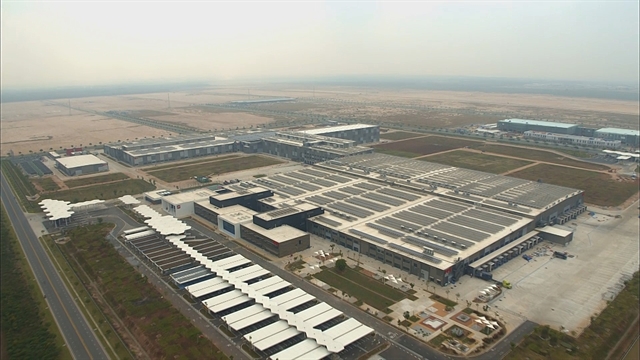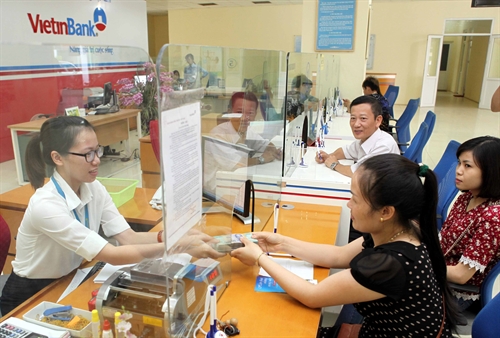 Economy
Economy

After pushing long-term rates to a two-year high of 8.38 per cent, some commercial banks continue to raise short-term deposits to the 5.5 per cent cap.
 |
| Customers make a transaction at a VietinBank branch in Sơn La Province. The central bank set a cap of 5.5 per cent per year for short-term deposits of less than six months and floated the rate for medium- and long-term deposits. - VNA/VNS Photo Trần Việt |
HA NOI(VNS) — After pushing long-term rates to a two-year high of 8.38 per cent, some commercial banks continue to raise short-term deposits to the 5.5 per cent cap.
Currently, the central bank sets the cap of 5.5 per cent per year only for short-term deposits of below six months while it floats the rate for medium- and long-term deposits.
It is estimated that 13 banks list the ceiling rate for short-term deposits. Most of them are small and medium size.
Ocean Bank lists the 5.5 per cent rate per year for 5-month deposits. A lower rate between 4.9 per cent and 5.45 per cent is quoted by the bank for 1 to 4 month terms.
The cap rate is also applied at VietBank for 3, 4 and 5 month terms while the bank’s rates for 1 and 2 month deposits are 5.4 per cent per year.
Viet A Bank and BaoVietBank also applies the ceiling rate for their ‘Online Saving’ and ‘EZ Saving’ with terms of 1 to 5 months while the 5.4 per cent to 5.45 per cent rate is applied for other deposits with the same terms.
The ceiling rate is also seen in numerous small banks of NamABank, HDBank, NCB, and Viet Capital Bank, in addition to OCB and Kienlong Bank.
Sacombank is the first among large-sized banks to take part in the short-term deposit rate hike race as it raises the rate to 5.5 per cent for 5 month terms this month, up from 4.5 per cent to 4.9 per cent applied last year.
Other large-sized banks still quote the rates for short-term deposits under the 5.5 per cent cap, ranging between 4 per cent and 5.2 per cent per year.
Banks said that the rate hike was aimed at helping them attract depositors to meet rising capital demands. The central bank has planned to expand the issuing of credit to roughly 20 per cent this year to meet the anticipated 6.7 per cent growth in GPD.
Therefore, according to HCM Securities Corporation, to guarantee the expansion of credit, mobilisation needs to grow parallel, while banks have to allocate resources to purchase government bonds and handle bad debts, thus putting pressure on interest rates.
Besides, according to experts, inflation is predicted to reach between 4 per cent and 5 per cent this year, much higher than the rate in 2015, which indirectly puts pressure on the mobilisation of deposits. — VNS




